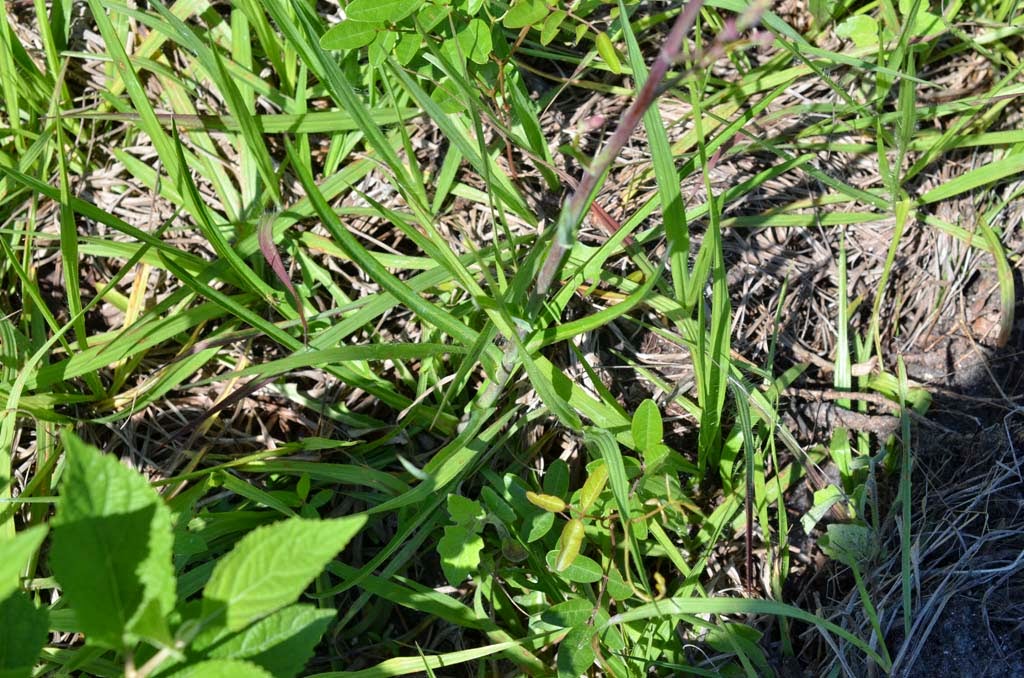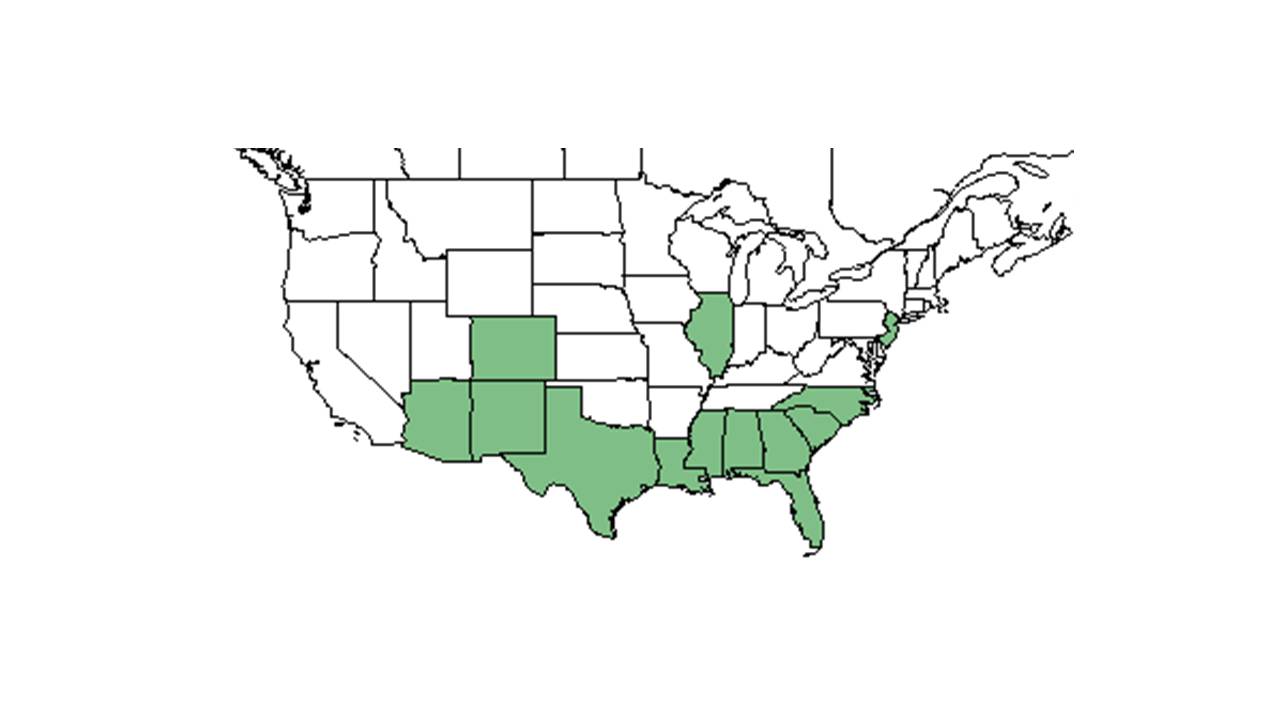Difference between revisions of "Lactuca graminifolia"
(→Distribution) |
|||
| (31 intermediate revisions by 12 users not shown) | |||
| Line 3: | Line 3: | ||
{{taxobox | {{taxobox | ||
| name = Lactuca graminifolia | | name = Lactuca graminifolia | ||
| − | | image = | + | | image = Lact_gram.jpg |
| − | | image_caption = | + | | image_caption = Photo by Wayne Matchett, [http://www.spacecoastwildflowers.com./ SpaceCoastWildflowers.com] |
| regnum = Plantae | | regnum = Plantae | ||
| divisio = Magnoliophyta - Flowering plants | | divisio = Magnoliophyta - Flowering plants | ||
| Line 15: | Line 15: | ||
| binomial_authority = Michx. | | binomial_authority = Michx. | ||
| range_map = LACT_GRAM_dist.jpg | | range_map = LACT_GRAM_dist.jpg | ||
| − | | range_map_caption = Natural range of ''Lactuca graminifolia'' from USDA NRCS [http:// | + | | range_map_caption = Natural range of ''Lactuca graminifolia'' from USDA NRCS [http://plants.usda.gov/core/profile?symbol=LAGR Plants Database]. |
}} | }} | ||
| + | |||
| + | Common name: grassleaf lettuce, coastal plain lettuce<ref name=weakley>Weakley, A.S. 2020. Flora of the Southeastern United States. Edition of 20 October 2020. University of North Carolina at Chapel Hill, Chapel Hill, North Carolina.</ref> | ||
| + | ==Taxonomic notes== | ||
| + | Synonym: none<ref name=weakley/> | ||
| + | |||
| + | Varieties: ''Lactuca graminifolia'' Michaux ''var. graminifolia''<ref name=weakley/> | ||
| + | |||
==Description== | ==Description== | ||
<!-- Basic life history facts such as annual/perrenial, monoecious/dioecious, root morphology, seed type, etc. --> | <!-- Basic life history facts such as annual/perrenial, monoecious/dioecious, root morphology, seed type, etc. --> | ||
| − | + | A description of ''Lactuca graminifolia '' is provided in [http://www.efloras.org/florataxon.aspx?flora_id=1&taxon_id=250067035 The Flora of North America]. | |
| + | This species is abundant where found. <ref name="FSU Herbarium"> | ||
| + | Florida State University Robert K. Godfrey Herbarium database. URL: [http://herbarium.bio.fsu.edu http://herbarium.bio.fsu.edu]. Last accessed: June 2014. Collectors: Loran C. Anderson, Lisa Keppner, Ed Keppner, Paul L. Redfearn, Jr., Robert K. Godfrey, Grady W. Reinert, Richard S. Mitchell, Gwynn W. Ramsey, H.L. Stripling, James R. Burkhalter, S.W. Leonard, L. Baltzell, D.B. Ward, D. Burch, S.G. Shelter, Kevin Oakes, R. Komarek, R.A. Norris, John B. Nelson, Travis MacClendon, and Karen MacClendon. States and Counties: Florida: Bay, CalhounColumbia, Dixie, Escambia, Franklin, Gadsden, Hernando, Jackson, Jefferson , Lake, Liberty, Leon, Levy, Madison, Marion, Okaloosa, Orange, Pasco, Polk, Taylor, and Wakulla. Georgia: Grady and Thomas.</ref> | ||
| + | ==Distribution== | ||
| + | This plant can be found from North Carolina to Florida, and west to central Louisiana. There are disjunct populations in southern New Jersey.<ref name=weakley/> | ||
| − | |||
==Ecology== | ==Ecology== | ||
===Habitat=== <!--Natural communities, human disturbed habitats, topography, hydrology, soils, light, fire regime requirements for removal of competition, etc.--> | ===Habitat=== <!--Natural communities, human disturbed habitats, topography, hydrology, soils, light, fire regime requirements for removal of competition, etc.--> | ||
| − | + | ||
| + | This species is found in pine flatwoods, evergreen scrub oak sand ridges, fallow fields, bordering swamps, and longleaf pine-wiregrass pinelands. <ref name="FSU Herbarium"/> Also found in disturbed areas, '' Lactuca graminifolia'' has also been observed to grow along roadsides, near campgrounds, around parking compounds, and within moist, sphagnum-filled ditches. <ref name="FSU Herbarium"/> It grows in dry, loamy sands as well as moist, grassy areas in open light conditions. <ref name="FSU Herbarium"/> Associated species includes Longleaf pine, wiregrass, ''Phlox floridana, Stillingia sylvatica, Asimina longifolia'' var. ''spathulata, Lactuca graminifolia, Stylosanthes biflora, Erigeron strigosa, Baptisia lanceolata, Hedyotis crassifolia, Pterocaulon undulatum, Asclepias humistrata,'' and ''Quercus hemisphaerica''. <ref name="FSU Herbarium"/> | ||
===Phenology=== <!--Timing off flowering, fruiting, seed dispersal, and environmental triggers. Cite PanFlora website if appropriate: http://www.gilnelson.com/PanFlora/ --> | ===Phenology=== <!--Timing off flowering, fruiting, seed dispersal, and environmental triggers. Cite PanFlora website if appropriate: http://www.gilnelson.com/PanFlora/ --> | ||
| − | ===Seed dispersal=== | + | |
| − | ===Seed bank and germination=== | + | ''L. graminifolia'' has been observed flowering from March through June, September, and October.<ref name="FSU Herbarium"/><ref>Nelson, G. [http://www.gilnelson.com/ PanFlora]: Plant data for the eastern United States with emphasis on the Southeastern Coastal Plains, Florida, and the Florida Panhandle. www.gilnelson.com/PanFlora/ Accessed: 12 DEC 2016</ref> It has also been observed fruiting from May through June and in October. <ref name="FSU Herbarium"/> |
| + | <!--===Seed dispersal===--> | ||
| + | <!--===Seed bank and germination===--> | ||
| + | |||
===Fire ecology=== <!--Fire tolerance, fire dependence, adaptive fire responses--> | ===Fire ecology=== <!--Fire tolerance, fire dependence, adaptive fire responses--> | ||
| + | |||
| + | It is found in patches of degraded longleaf pine sandhill after burn and control (no burn) treatments.<ref>Heuberger, K. A. and F. E. Putz (2003). "Fire in the suburbs: ecological impacts of prescribed fire in small remnants of longleaf pine (Pinus palustris) sandhill." Restoration Ecology 11: 72-81.</ref> | ||
| + | |||
===Pollination=== | ===Pollination=== | ||
| − | |||
| − | Halictidae: | + | ''Lactuca graminifolia'' has been observed at the Archbold Biological Station to host sweat bees such as ''Halictus poeyi'' (family Halictidae) and leafcutting bees such as ''Dianthidium floridiense'' (family Megachilidae).<ref name="Deyrup 2015">Deyrup, M.A. and N.D. 2015. Database of observations of Hymenoptera visitations to flowers of plants on Archbold Biological Station, Florida, USA.</ref> Additionally, ''L. graminifolia'' has been observed to host the aphid ''Uroleucon sp.'' (family Aphididae).<ref>Discoverlife.org [https://www.discoverlife.org/20/q?search=Bidens+albaDiscoverlife.org|Discoverlife.org]</ref> |
| + | <!--===Diseases and parasites===--> | ||
| − | + | ==Conservation, cultivation, and restoration== | |
| + | |||
| + | ==Cultural use== | ||
| + | Similar to cultivated lettuce, wild lettuce species can be used as salad greens.<ref> Fernald, et al. 1958. Edible Plants of Eastern North America. Harper and Row Publishers, New York.</ref> | ||
| − | |||
| − | |||
| − | |||
| − | |||
==Photo Gallery== | ==Photo Gallery== | ||
| + | <gallery widths=180px> | ||
| + | </gallery> | ||
| + | |||
==References and notes== | ==References and notes== | ||
Latest revision as of 11:03, 2 June 2023
| Lactuca graminifolia | |
|---|---|

| |
| Photo by Wayne Matchett, SpaceCoastWildflowers.com | |
| Scientific classification | |
| Kingdom: | Plantae |
| Division: | Magnoliophyta - Flowering plants |
| Class: | Magnoliopsida – Dicotyledons |
| Order: | Asterales |
| Family: | Asteraceae ⁄ Compositae |
| Genus: | Lactuca |
| Species: | L. graminifolia |
| Binomial name | |
| Lactuca graminifolia Michx. | |

| |
| Natural range of Lactuca graminifolia from USDA NRCS Plants Database. | |
Common name: grassleaf lettuce, coastal plain lettuce[1]
Contents
Taxonomic notes
Synonym: none[1]
Varieties: Lactuca graminifolia Michaux var. graminifolia[1]
Description
A description of Lactuca graminifolia is provided in The Flora of North America. This species is abundant where found. [2]
Distribution
This plant can be found from North Carolina to Florida, and west to central Louisiana. There are disjunct populations in southern New Jersey.[1]
Ecology
Habitat
This species is found in pine flatwoods, evergreen scrub oak sand ridges, fallow fields, bordering swamps, and longleaf pine-wiregrass pinelands. [2] Also found in disturbed areas, Lactuca graminifolia has also been observed to grow along roadsides, near campgrounds, around parking compounds, and within moist, sphagnum-filled ditches. [2] It grows in dry, loamy sands as well as moist, grassy areas in open light conditions. [2] Associated species includes Longleaf pine, wiregrass, Phlox floridana, Stillingia sylvatica, Asimina longifolia var. spathulata, Lactuca graminifolia, Stylosanthes biflora, Erigeron strigosa, Baptisia lanceolata, Hedyotis crassifolia, Pterocaulon undulatum, Asclepias humistrata, and Quercus hemisphaerica. [2]
Phenology
L. graminifolia has been observed flowering from March through June, September, and October.[2][3] It has also been observed fruiting from May through June and in October. [2]
Fire ecology
It is found in patches of degraded longleaf pine sandhill after burn and control (no burn) treatments.[4]
Pollination
Lactuca graminifolia has been observed at the Archbold Biological Station to host sweat bees such as Halictus poeyi (family Halictidae) and leafcutting bees such as Dianthidium floridiense (family Megachilidae).[5] Additionally, L. graminifolia has been observed to host the aphid Uroleucon sp. (family Aphididae).[6]
Conservation, cultivation, and restoration
Cultural use
Similar to cultivated lettuce, wild lettuce species can be used as salad greens.[7]
Photo Gallery
References and notes
- ↑ 1.0 1.1 1.2 1.3 Weakley, A.S. 2020. Flora of the Southeastern United States. Edition of 20 October 2020. University of North Carolina at Chapel Hill, Chapel Hill, North Carolina.
- ↑ 2.0 2.1 2.2 2.3 2.4 2.5 2.6 Florida State University Robert K. Godfrey Herbarium database. URL: http://herbarium.bio.fsu.edu. Last accessed: June 2014. Collectors: Loran C. Anderson, Lisa Keppner, Ed Keppner, Paul L. Redfearn, Jr., Robert K. Godfrey, Grady W. Reinert, Richard S. Mitchell, Gwynn W. Ramsey, H.L. Stripling, James R. Burkhalter, S.W. Leonard, L. Baltzell, D.B. Ward, D. Burch, S.G. Shelter, Kevin Oakes, R. Komarek, R.A. Norris, John B. Nelson, Travis MacClendon, and Karen MacClendon. States and Counties: Florida: Bay, CalhounColumbia, Dixie, Escambia, Franklin, Gadsden, Hernando, Jackson, Jefferson , Lake, Liberty, Leon, Levy, Madison, Marion, Okaloosa, Orange, Pasco, Polk, Taylor, and Wakulla. Georgia: Grady and Thomas.
- ↑ Nelson, G. PanFlora: Plant data for the eastern United States with emphasis on the Southeastern Coastal Plains, Florida, and the Florida Panhandle. www.gilnelson.com/PanFlora/ Accessed: 12 DEC 2016
- ↑ Heuberger, K. A. and F. E. Putz (2003). "Fire in the suburbs: ecological impacts of prescribed fire in small remnants of longleaf pine (Pinus palustris) sandhill." Restoration Ecology 11: 72-81.
- ↑ Deyrup, M.A. and N.D. 2015. Database of observations of Hymenoptera visitations to flowers of plants on Archbold Biological Station, Florida, USA.
- ↑ Discoverlife.org [1]
- ↑ Fernald, et al. 1958. Edible Plants of Eastern North America. Harper and Row Publishers, New York.